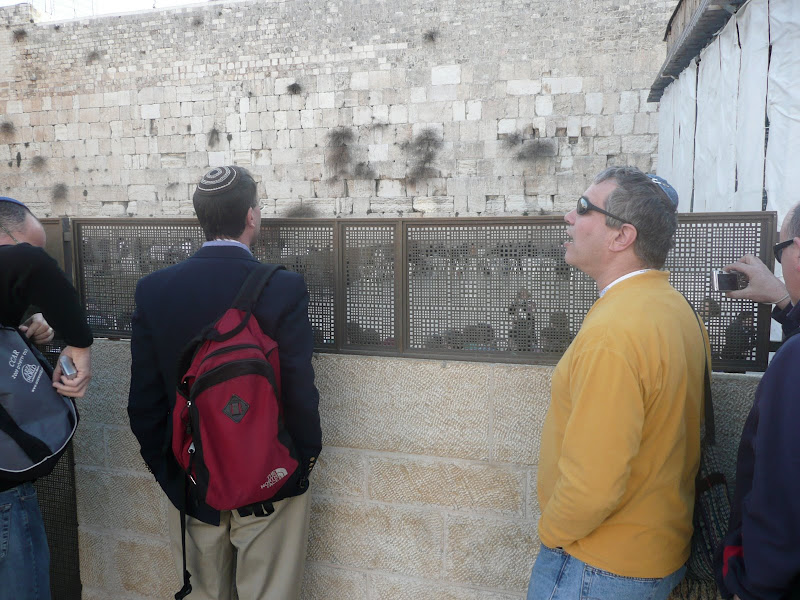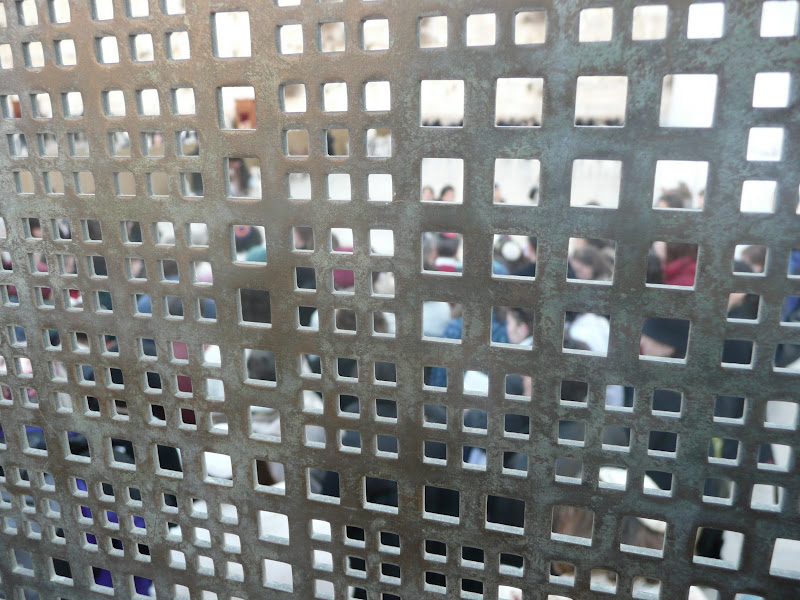
The morning began on an (early and) incredible note. It so happened that the CCAR conference coincided with Rosh Chodesh Adar (the first day of the month of Adar) and the 20th anniversary of Women at the Wall (Nashim baKotel). Women at the Wall is a group of courageous Israeli women of all religious stripes who are non-violently demanding their right to pray at what has been considered the holiest site in Judaism – the Western Wall. The site – by government decree – is presided over by an ultra-Orthodox group that demands anyone approaching the wall be dressed modestly (covered up to arms and legs), wear a kippah if a man, and separated by a mechitzah. The men have the larger, well appointed side – with two Arks, and the women have the tinier side. Once each Hebrew month, for the past 20 years, this informal group h

as been meeting to pray at the Wall. Since the Orthodox consider women praying a disgrace, their voices a sin and distraction to male prayer, and their reading of Torah a desecration of God’s name, this act is quite bold. In the past Women at the Wall have not only been cursed and shouted at, but angry ultra-Orthodox men have thrown chairs and even excrement over the mechitzah at them. The dispute has gone to the Supreme Court which demanded that the government find equal access for the women. They have been given access to the southern section of the Western Wall – which is a newly excavated archeological site, hidden from the rest of the Wall by a ramp to the Temple Mount. Still, separate but equal is not equal, and the women begin their prayer in the back of the women’s section and then move to read Torah at the other site. This morning, over 100 women were joined by three or

four dozen men – standing behind the mechitzah – as they welcomed the new month. I was proud to be there in support. Standing behind the mechitzah, watching the women pray through a grate, I imagined what it was like for Orthodox women on the other side. I was filled with anger at the Orthodox man who shouted at them to be quiet when their singing rose above a whisper, furious at the yeshivah boys who laughed and leaned over the mechitzah to take pictures with their cellphones, sorry for the female shoteret (guard) who also yelled at them to be quiet, and proud of my colleagues and their friends as they continued to pray and take joy in the beginning of Adar.
After a brief business meeting – electing a new Board, and hearing the grim news from URJ president, Rabbi Eric Yoffie, we divided up into several groups to learn about social justice issues in Israel. Michelle and I went with Keren b’Kavod (Funds with Respect), a hands-on social justice group created by the Israeli Religious Action Center. (The IRAC does somewhat in Israel what the RAC does in Washington, except the IRAC does a lot more suing all the way up the Supreme Court. They not only fight for the rights of Progressive Jews, but for new immigrants, secular Jews, even Jews of other religious stripes. Think of them as the ACLU of Israel, with a Reform bent.) Keren b’Kavod goes to S’derot and patronizes the local shops when everyone else in Israel is scared away by the bombs from Gaza. They then donate the food purchased to local shelters. Keren b’Kavod ?. Keren b’Kavod also partners with Mesila in Tel Aviv to help the foreign workers and their families and those awaiting refugee status. Mesila was created by the Tel Aviv municipality to deal with the 30,000 foreign workers within its boundaries. The story is simple – after the Palestinians living in the territories were no longer allowed to cross the border to work (after the first and second intifadas), Israel still needed workers. With the huge influx of Russian immigrants after the Soviet Union, they were needed quickly to build housing and support structures. After this crisis, most of the male foreign workers were sent home. Many of the women stayed, especially those with children. Now, they work twelve hour days and have to leave their children with “babysitters” who house two to three dozen children in as many playpens, where they can’t move, don’t receive any human contact, and wait all day for their mothers to return. Mesila tries to create better kindergartens, help the mothers take better care of their children, and supports internal community support systems. After touring the Mesila offices, we were brought to a formerly upscale shoe shopping area in Tel Aviv by the old bus station. Now, hundreds of foreign workers sit in their own groups without work. Similar numbers of refugees, awaiting formal status declaration by the UN, sit in a park. We met with a man who had walked from Darfur in the Sudan to Israel and had created a group called B’nei Darfur to shelter homeless refugees, advocate for their rights, and educate the adults and children to become a part of Israeli society. None of these workers or refugees are Jewish, and so they fall into a gap in the limited Israeli immigration law.
In the evening, many of the members of my class which started in Israel together in 1993 and were ordained in 1998 got together for dinner. We shared the experiences of the day. One classmate had met with students on a Reform mechinah – a “gap” program for students between high school and army service. A few had traveled with Rabbis for Human Rights. Some had learned about women’s issues in Israel. All of us had done things beyond a normal Israel tour and learned more depth about the real Israel.
The day ended with a special screening of Zrubavel at the Cinamatheque. Sort of Israel’s Academy for Motion Picture Arts and Sciences, Cinamatheque sits just across the Ben Hinnom valley from the Old City. The film was written and directed by a 33 year-old Ethiopian immigrant. The story – both funny and tragic – was a cross between the dilemmas that Tevye wrestled with in Fiddler on the Roof, the immigrant issues of West Side Story, and the real life of the urban city dweller of Spike Lee’s Do The Right Thing. To many of us, it seemed a scathing indictment of what Israeli society had both done and failed to do for the Ethiopian olim (immigrants). But, as the writer/director said to us after the showing, he was trying to show the commonality of all immigrant experiences – whether the Russians or Moroccans to Israel, Arabs to Europe, or Irish to America. His point was that we have all been through this process – and it is something that ties us together.



